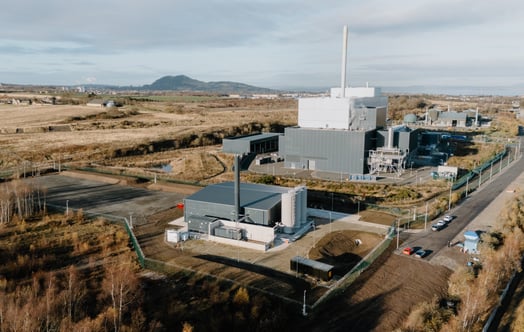District heating is not only a promising low carbon alternative to gas boilers, but it presents a unique opportunity for developers to implement a solution that can adapt alongside changing regulation.
New rules put in place by the Scottish government will see the phasing out of gas boilers in new developments, before a ban on their use in 2024. This legislation comes into play with a backdrop of changes to UK regulation to help get the country close to meeting our 2050 zero emissions target, changes that will dictate how developers in Scotland can secure planning approval for their projects.
District heating is not only a promising low carbon alternative to gas boilers, but it presents a unique opportunity for developers to implement a solution that can adapt alongside changing regulation. With a heat network, developers can draw on, and switch between multiple different energy sources across a development, so that the heating can change with new techniques, technologies and regulation.
A heating solution that adapts over time
There are a number of existing technologies vying to be the successor to gas boilers in the UK and new solutions and sources for low carbon and renewable energy are continuing to emerge. District heating is promising, not only because it provides a low carbon alternative, but because it is not tied to just one technology. At Vattenfall we like to describe this flexibility as being ‘technology agnostic’. This means that no matter what new technology may emerge in the coming years; developments are ready to adopt without costly retrofitting.
Heat networks allow us to lay a solid foundation that can draw on new forms of low carbon energy as they are created, without having to rebuild the infrastructure each time. Whether the heat is generated in one place, such as via a centralised waste-to-energy plant, or fed into the system at various points – for example, from the excess heat from coffee roasters and data centres – the same basic infrastructure at the heart of a heat network stays the same. In this way, heat networks are a generational investment that can endure and evolve over decades, rather than just a quick-fix for the gas boiler ban.
Video player requires marketing cookies.
To view this content please click here to allow marketing cookies.
What is district heating?
How does district heating work? How can it help to reduce carbon emissions? District heating and heat networks can reduce our reliance on fossil fuels, clean up the air in our cities and support local economies.
Keeping options open to reduce risk
In addition to reducing the need for any costly retrofits, opting for a low carbon heating solution that can evolve with time helps to reduce the risk of putting everything on an energy source that doesn’t take-off or doesn’t secure the same subsidies and funding. For instance, electricity and heat pumps are both low carbon options being considered for heating homes in the UK, but both are reliant on investment and resourcing that is not clear and open to change. Developers can remove the need to choose between one or the other with a heat network – as at its most basic, it is just a network of pipes carrying hot water. Instead, any source for heat generation, whether a heat pump, the electricity from a wind farm or a hydrogen boiler can be incorporated. This means developers can guarantee that they can always adapt if an alternative low carbon solution is found, or is preferred by the local authority in their area.
It doesn’t need to happen all at once
That’s not to say that you need a whole network in place before you can start connecting buildings. It’s perfectly possible to build distinct district networks that gradually expand, eventually linking up with one another to create larger networks that draw on multiple sources of heat.
In this way district heating can be seen as a modular, plug-and-play solution for heat that’s fit for the future.
Get in touch if you would like to find out more about we can help you transition to low carbon heating.





